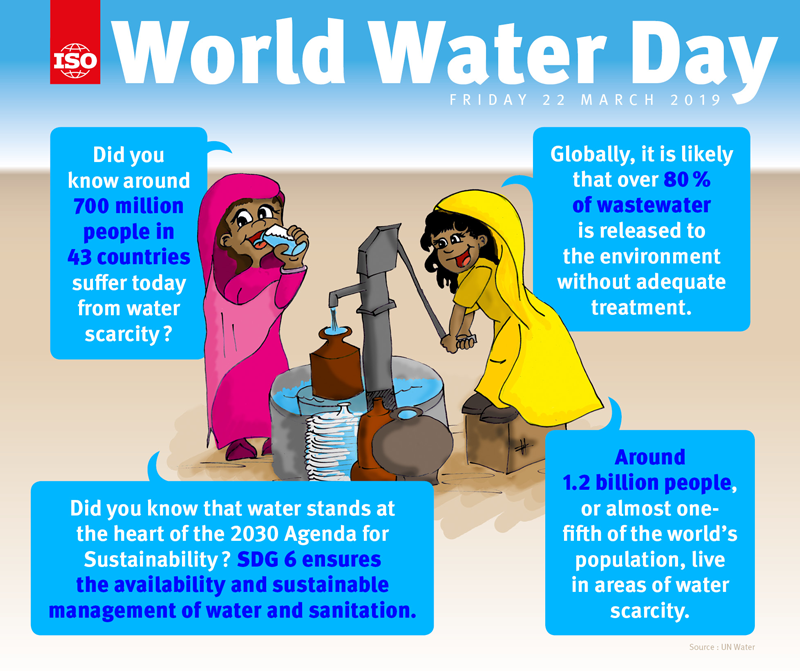Although water covers 70 % of the earth’s surface, only a fraction of it is freshwater. The available drinking water is unevenly distributed across the globe, polluted or disputed, which means billions of people don’t have access to clean water each day. The current situation also means that 4.5 billion people still lack safely managed sanitation services, particularly in rural areas.
Celebrated each year on 22 March, World Water Day puts the spotlight on the importance of freshwater. This year’s edition, “Leaving no one behind”, adapts the central promise of Agenda 2030 that progress achieved through sustainable development should be available to all. The Agenda, which is the United Nations’ roadmap to transform the world by 2030, includes a Sustainable Development Goal specifically dedicated to water – SDG 6. ISO has developed more than 1 400 standards relating to water, each representing best practice in a number of sectors including water quality, water supply, wastewater and stormwater systems, and infrastructure. In particular, a new standard on water reuse could make a significant impact for water scarcity.
Water use has been growing globally at more than twice the rate of population increase in the last century. Water shortage in arid parts of the globe has placed heavy pressure on urban areas, where about 55 % of the world population resides (UN). ISO technical committee ISO/TC 282 on water reuse, through its subcommittee SC 2, Water reuse in urban areas, is working hard to address the water shortage crisis in cities. Its new International Standard ISO 20760-1 offers guidelines on how to make use of reclaimed water in order to satisfy water demands and alleviate heavy pressure on urban areas.

Maya Ishikawa, Secretary of the technical committee, explains: “By providing guidelines for the planning and design of centralized water reuse systems and water reuse applications in urban areas as well as methods and tools to evaluate the risk and performance of water reuse systems, ISO/TC 282 standards will be the key to efficiently reuse water and help regions fight water shortages.” In addition, ISO/TC 282 focuses on water reuse systems for irrigation and industrial uses as well.
Another key standard addressing SDG 6 is ISO 30500 on non-sewered sanitation systems. An estimated 1.8 billion people across the globe are using a source of drinking water that is faecally contaminated, with such adverse consequences as disease, malnutrition, poverty, and child death. By offering basic requirements for the design and testing of stand-alone faecal sludge treatment units, ISO 30500 will help address the health needs of many communities worldwide.
Together these two standards will promote economic, social and environmental sustainability.
World Water Day 2019 theme: Leaving no one behind

